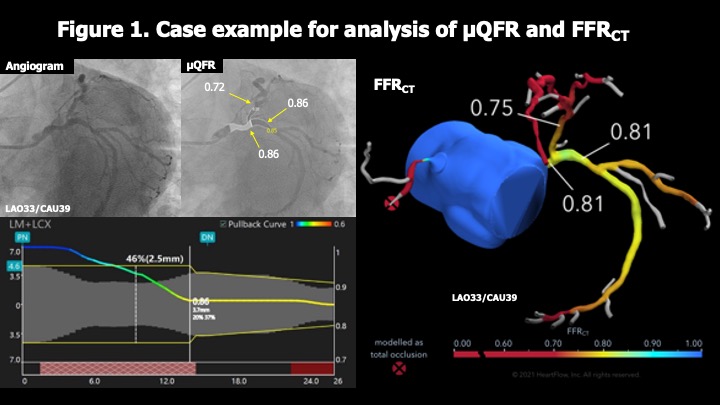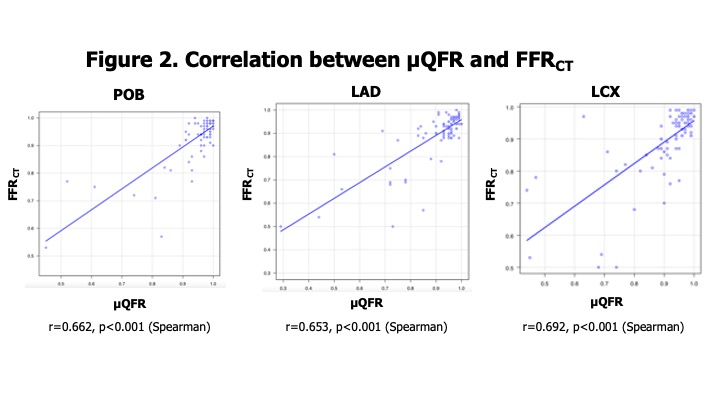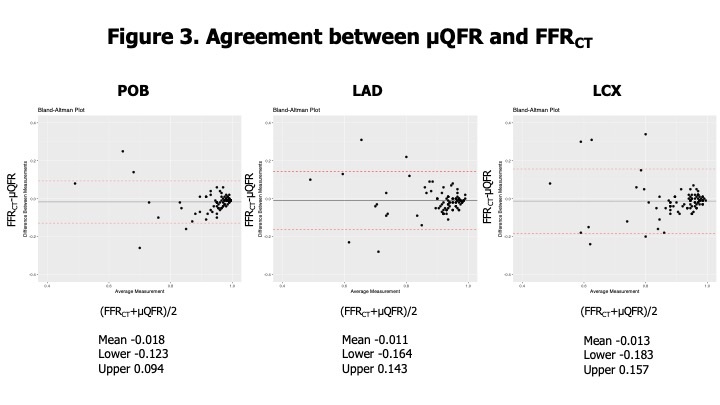Lots of interesting abstracts and cases were submitted for TCTAP 2022. Below are the accepted ones after a thorough review by our official reviewers. Don’t miss the opportunity to expand your knowledge and interact with authors as well as virtual participants by sharing your opinion in the comment section!
TCTAP A-073
Murray Law-Based Quantitative Flow Ratio for Assessment of Left Main Bifurcation Derived From a Single Fluoroscopic Angiographic View as Compared to FFRCT
By Nozomi Kotoku, Daixin Ding, Kai Ninomiya, Shinichiro Masuda, Shigetaka Kageyama, William Wijns, Shengxian Tu, Yoshinobu Onuma, Patrick W. Serruys
Presenter
Nozomi Kotoku
Authors
Nozomi Kotoku1, Daixin Ding1, Kai Ninomiya2, Shinichiro Masuda1, Shigetaka Kageyama1, William Wijns1, Shengxian Tu3, Yoshinobu Onuma1, Patrick W. Serruys1
Affiliation
University of Galway, Ireland1, Iwate Medical University, Japan2, Shanghai Jiao Tong University, China3
View Study Report
TCTAP A-073
Physiologic Lesion Assessment
Murray Law-Based Quantitative Flow Ratio for Assessment of Left Main Bifurcation Derived From a Single Fluoroscopic Angiographic View as Compared to FFRCT
Nozomi Kotoku1, Daixin Ding1, Kai Ninomiya2, Shinichiro Masuda1, Shigetaka Kageyama1, William Wijns1, Shengxian Tu3, Yoshinobu Onuma1, Patrick W. Serruys1
University of Galway, Ireland1, Iwate Medical University, Japan2, Shanghai Jiao Tong University, China3
Background
In patients with complex coronary artery disease, the presence or absence of left main disease is an important prognostic factor in assessing the risk balance between percutaneous coronary intervention and coronary artery bypass grafting. Functional assessment of coronary stenosis has become standard of care to evaluate the significance of coronary stenosis and to justify the performance of percutaneous coronary intervention in the contemporary practice. Imaging-derived physiological assessment based on angiography or multi-slice computed tomography is a good alternative to wire-based pressure measurement since imaging based functional assessment is associated with less invasiveness, shorter procedural time, and cost-effective practice. FFRCT is a well-established method based on three-dimensional reconstruction of coronary artery derived from noninvasive coronary computed tomography angiography. The Murray law-based quantitative flow reserve (µQFR) is a novel computational method of invasive angiography relying on a single angiographic view that takes into account side branches diameters to compute fractal flow division. The aim of the current analysis is to evaluate in patients with complex coronary artery disease the feasibility of µQFR in left main bifurcation and its diagnostic concordance with FFRCT.
Methods
In 89 consecutive left main bifurcations, FFRCT and µQFR were measured at 3 fiducial landmark points: i) point of left main bifurcation (POB); ii) proximal left anterior descending artery (LAD) 10 mm distal to POB; ii) proximal left circumflex artery (LCX) 10 mm distal to POB.
Results
Eighty-nine left main bifurcations were analysed with both FFRCT and µQFR (Figure 1). Single view µQFR was analyzable in 100%. Correlation and agreement between µQFR and FFRCT are shown in Figure 2 and Figure 3. The Spearman’s correlation coefficient showed moderate correlations at POB (r = 0.662, p < 0.001), LAD (r = 0.653, p < 0.001) and LCX (r = 0.692, p < 0.001).






Conclusion
To evaluate in patients with complex coronary artery disease the feasibility of µQFR in left main bifurcation and its diagnostic concordance with FFRCT, the full analysis of > 250 patients will be presented at the time of the meeting.


